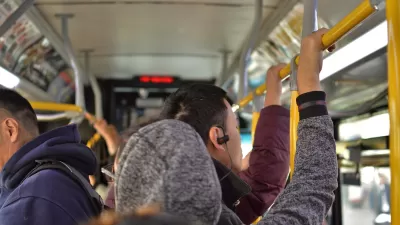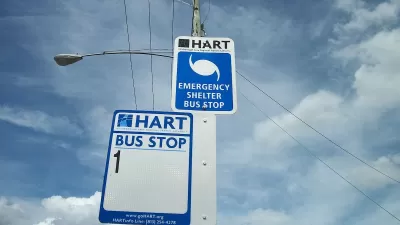The lines were chosen based on the income levels, ridership, and lack of subway access in surrounding neighborhoods.

Writing in El País, María Antonia Sánchez-Vallejo outlines New York City’s free transit pilot program, being launched on five bus lines that serve some of the city’s lowest-income neighborhoods.
The lines are spread out across each of the city’s five boroughs and will offer free rides for at least six months, with the possibility of extending the program to one year. “The authorities have explained that the routes were chosen based on ridership, fare non-payment rates and poverty in adjacent communities, as well as the routes’ access to commercial corridors.”
“As in Boston, where more than half of the users of the free lines live in low-income neighborhoods, the New York experiment seeks not only an environmental benefit, but above all to alleviate the unequal mobility of its residents in pursuit of greater spatial equity, which those who advocate alternative transportation models consider an essential step towards environmental sustainability.”
The program is expected to benefit up to 44,000 of the system’s 1.4 million weekly users each day. The article notes that “New York’s buses are the slowest in the country, with an average speed of 13 kilometers per hour (8mph). They are often excruciatingly slow, with runs that can exceed an hour in length.”
FULL STORY: New York rolls out free public transportation pilot project on five city bus lines

Study: Maui’s Plan to Convert Vacation Rentals to Long-Term Housing Could Cause Nearly $1 Billion Economic Loss
The plan would reduce visitor accommodation by 25,% resulting in 1,900 jobs lost.

North Texas Transit Leaders Tout Benefits of TOD for Growing Region
At a summit focused on transit-oriented development, policymakers discussed how North Texas’ expanded light rail system can serve as a tool for economic growth.

Why Should We Subsidize Public Transportation?
Many public transit agencies face financial stress due to rising costs, declining fare revenue, and declining subsidies. Transit advocates must provide a strong business case for increasing public transit funding.

How Community Science Connects People, Parks, and Biodiversity
Community science engages people of all backgrounds in documenting local biodiversity, strengthening connections to nature, and contributing to global efforts like the City Nature Challenge to build a more inclusive and resilient future.

Alabama: Trump Terminates Settlements for Black Communities Harmed By Raw Sewage
Trump deemed the landmark civil rights agreement “illegal DEI and environmental justice policy.”

Dear Tesla Driver: “It’s not You, It’s Him.”
Amidst a booming bumper sticker industry, one writer offers solace to those asking, “Does this car make me look fascist?”
Urban Design for Planners 1: Software Tools
This six-course series explores essential urban design concepts using open source software and equips planners with the tools they need to participate fully in the urban design process.
Planning for Universal Design
Learn the tools for implementing Universal Design in planning regulations.
City of Santa Clarita
Ascent Environmental
Institute for Housing and Urban Development Studies (IHS)
City of Grandview
Harvard GSD Executive Education
Toledo-Lucas County Plan Commissions
Salt Lake City
NYU Wagner Graduate School of Public Service





























